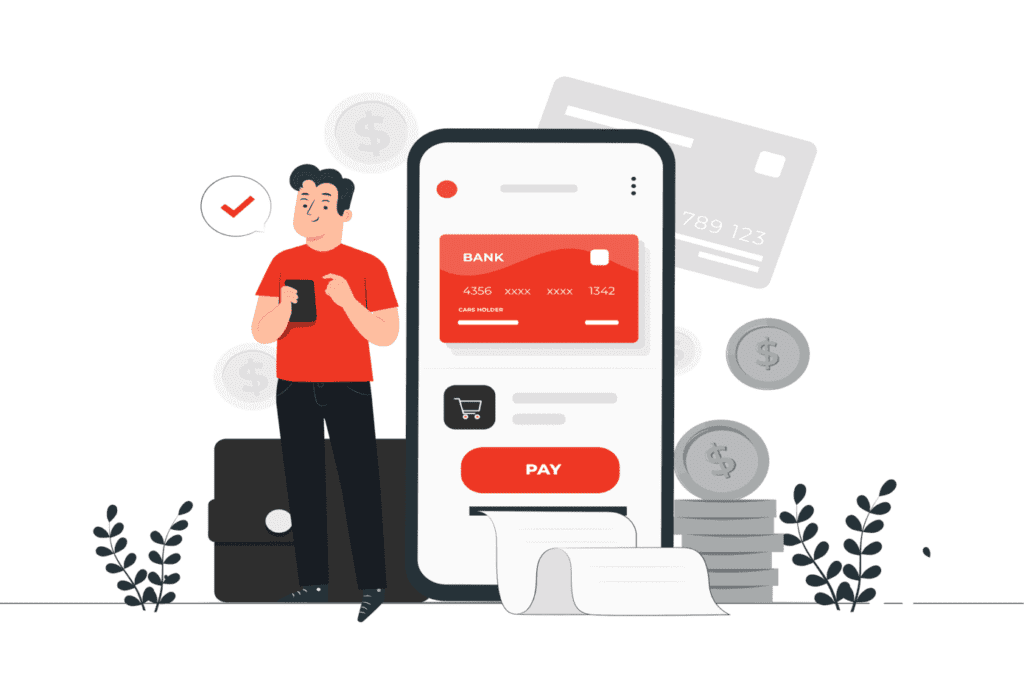Advertiser Disclosure: Many of the companies featured here provide compensation to us. This is how we maintain our free service for consumers. Compensation, along with hours of in-depth editorial research, determines where & how companies appear below.
In order to become more mindful of our money, people have started to develop and use their own fintech apps. These apps take into account how much money comes in and how much goes out, allowing us to track our expenses, make payments quickly, send money to others with a few clicks, plan upcoming budgets, secure card transactions, etc. Fintech apps help users to responsibly handle the money they have because it is always transparent how it is distributed. Such technology does not remove the allure of making money, but it offers more control over how we organize it. For business, this area opens up great opportunities, as it is actively developing and there is room for new products. We will talk about how to develop a fintech app in this blog post.
Steps to Successfully Develop a Fintech Application
For a finished application to really become successful, it must be competitive. To do this, you need to have a good plan from the beginning, know your audience exactly, add features that are useful for users, and ensure security and ease of use. Much of the above falls on the shoulders of software developers, so it is important to think about who to give developing a FinTech application to. The company must be reliable, have sufficient experience, and have an extensive talent pool with a high level of skills. You will need a trusted company, like Jatapp. She has all the listed qualities, which makes cooperation beneficial for both parties.
Step 1: Niche selection
When it comes to creating a Financial app, picking the right niche is essential for success. Financial applications can range from personal finance to insurance and trading – it’s important to focus on the needs of your target market and determine which type of app would serve them best. Don’t be afraid to come up with revolutionary ideas or refine existing technologies; you never know which direction may lead you to investor interest. With plenty of countries lacking in Financial Technology solutions, now is as good a time as ever to explore this new frontier.
Step 2: Ensure legal compliance
As Fintech continues to grow and expand, so do the regulations and legal requirements that it must adhere to. To keep up with all of these changes, companies must familiarize themselves with the different laws in the countries their app is designed for. Staying on top of data privacy laws such as GDPR and CCPA is key to safeguarding users, but there are several other compliance practices as well. From PCI DSS agreements to AML compliance verification or even digital signature certificates, organizations need a comprehensive strategy that takes into account both local and global regulations. In this way, they can protect customers from fraud while also protecting their business from hefty fines and enforcement action – balancing security with regulatory compliance.
Step 3: Develop a project vision
A project vision is a carefully crafted plan determined to guide the development of a product. Having this vision in place allows the team to decide what problems the product would solve for users, and which features should be included. Everyone needs to be on the same page about why and how this app is made. That is why market research, as well as consultation between business analysts and product managers, are so crucial for defining a viable project vision. Only with a strong understanding of the business situation can we ensure that our final idea is both competitive and user-oriented, two factors essential for accomplishing success in the end.
Step 4: Platform selection
FinTech solutions are quickly gaining in popularity worldwide, and it can be difficult to determine which development language is best for the job. Native app development requires a separate app for each operating system, with different codebases for Android and IOS. Cross-platform development allows developers to write a single codebase that can be used on any OS, while PWA (Progressive Web App) provides a native feeling without all the native features of an app developed natively. Each language comes with its own developmental costs and time frame, so choosing the right language is crucial when developing FinTech solutions.
Step 5: UI/UX design
FinTech applications are meant to be user-friendly and hassle-free, they are designed to streamline the banking process making it easier for customers. User Interface/User Experience (UI/UX) plays a significant role in how Fintech applications are accepted by the public. Simplicity and transparency are what make an application appealing; a nice and organized layout that allows users access to all of their needed information without scrolling through complicated menus means that a product is going in the right direction. Security is vital but having good UI/UX is just as important when it comes to creating successful Fintech applications. The goal should always be to make everything that users need readily available on the dashboard with minimal features leaving no confusion or frustration for users trying to navigate within the application.
Step 6: Creating an MVP
A minimum viable product isn’t just about testing the application before launching it. It also offers great advantages for businesses and developers who can use user feedback from early versions of their apps to make necessary adjustments that improve their product before the full launch. As a result, investors will be more likely to invest if there is enough evidence of its success in the form of user feedback from a test version. Moreover, by creating a basic version of the app with its most fundamental components and features you get an opportunity to see what features should be included or removed in order to make your product stand out among other applications on the market.
Step 7: Further development
Everything is simply explained here: the conclusions that were made as a result of the launch of the MVP need to be put into practice. After that, you can move on to moving towards longer-term plans that were incorporated into the project vision. At the same time, one should not forget about marketing, data analysis, and user opinion.

Conclusion
This guide has highlighted the key principles of fintech app design, from strategizing and structuring the app to creating a user-friendly interface and secure technical infrastructure. We hope that this additional information on how to build a fintech app has been helpful and provides additional guidance if you still have questions. For an experienced development partner to help ensure success, we recommend JatApp – with years of developing award-winning apps for startups and enterprises worldwide, you can rely on their experience for the best results.




